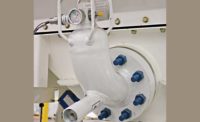Dust collection is an important safety and operational precaution for organizations in virtually every industry. For those with production-heavy environments, the need for efficient, ongoing dust collection is even more critical. Historically, the National Fire Protection Association (NFPA) has recommended that organizations take proactive measures to reduce the amount of combustible dust present in their facilities and its associated risks, but this was never enforced by OSHA.
These requirements were described in a number of NFPA standards. Some of the primary standards governing this topic include 484 (Standard for Combustible Metals), 652 (Standard on the Fundamentals of Combustible Dust), and 654 (Standard for the Prevention of Fire and Dust Explosions from the Manufacturing, Processing, and Handling of Combustible Particulate Solids). Several more industry-and facility-specific standards provide additional guidance.
In 2018, the original NFPA 652 (developed a few years prior) was revised so that a dust hazard analysis (DHA) would need to be completed by September 7, 2018. For the 2019 update, this deadline was extended to September 7, 2020. After this date, organizations will need to review and update their DHA once every five years. It’s important to note that the absence of any previous incidents resulting from combustible dust does not in any way excuse organizations from following the new requirement of having a DHA completed.
Data reveals risks
Combustible dust has always posed a threat to organizations, yet despite the prevalence of NFPA recommendations, dust-related explosions and fires continue to occur. In the 2019 Mid-Year Combustible Dust Incident Report from Dust Safety Science (DSS), the research organization revealed that 34 dust explosions and 115 dust fires were reported around the world. These incidents tragically resulted in 13 deaths and nearly 70 injuries.
More shocking, however, is that this data is up across the board from the 2018 mid-year report, which revealed the occurrence of 89 fires, 26 explosions, 40 injuries, and nine deaths globally.
But fires and explosions aren’t the only threats that combustible dust poses. Organizations involved in the production of goods that utilize wood materials or components are naturally subject to wood dust, which carries additional risks. It often contains chemicals from previous treatments as well as fungi. These foreign substances can enter workers’ lungs and cause illness. Also, long-term exposure can cause a variety of breathing conditions and other health problems.
It’s also important to understand that there are distinctions between combustible dust and non-combustible dust. To some, dust is dust — it might appear to be nothing more than a housekeeping nuisance. But depending on your facilities and the type of production in which you’re involved, the dust you produce may indeed be combustible. This is true for dust that accumulates on surfaces, which is susceptible to fires, and particularly dust that is suspended in the air, which when combined with an ignition source can be explosive.
These risks, combined with the potential for combustible dust to cause severe damage to production environments and put workers at serious risk of injury or death, underscores the importance of taking action as soon as possible. But what exactly goes into a DHA?
Understanding the process
First, organizations looking to have a DHA conducted at their facilities must ensure they’re working with truly qualified inspectors. Unfortunately, the current NFPA 652-2019 standard simply requires a “qualified person” to conduct the analysis. This person is directly responsible for the quality of the DHA as well as the resulting changes and improvements that come from it.
The purpose of a DHA is to identify the fire, deflagration, and explosion hazards associated with combustible dusts and combustible particulate solids and document how these hazards are currently being controlled or managed. The DHA will analyze not only any process equipment that handles, generates, and stores combustible dust (e.g., dust collectors, dryers, bins, silos, etc.) but also any building compartments (i.e. rooms, areas, buildings, etc.) where combustible dust could be present in any quantity.
First, the normal operating conditions (temperature, speed, pressure, material/product flow, etc.) associated with the process equipment and building compartments will be identified. Next, specific scenarios will be evaluated to determine the consequences of what could go wrong in the event of a fire, deflagration, and/or explosion. Then, the effectiveness of the safeguards that are currently implemented to control or eliminate these consequences will be thoroughly examined.
Finally, where the current safeguards are inadequate or nonexistent, recommendations will be issued that precisely describe what administrative or engineering controls can be implemented to effectively mitigate the fire, deflagration, and/or explosion hazards associated with the process equipment or building compartments.
Keeping watch
Once the DHA has been completed, corrective actions have been identified and prioritized, and steps are being taken to resolve any compliance or collection issues, organizations should begin considering future combustible dust incident prevention and general awareness. While new policies and procedures may be put in place to prevent combustible dust from accumulating or dispersing, it’s critical that your team members know what to watch for going forward.
The clock is ticking, and September 7, 2020 will be here before we know it. Has your organization done all that it can to protect employees and equipment from the hazards of combustible dust?



